Challenges and Opportunities in China's Demographic Dividend
China's rapid economic growth was fueled by its demographic dividend, but it now faces challenges such as population aging, rising labor costs, and avoiding the middle-income trap. The country has transitioned to a "new normal" of slower growth, structural changes, and evolving growth drivers. Understanding China's demographic transition and the impact on its economy is crucial for sustainable growth.
Download Presentation

Please find below an Image/Link to download the presentation.
The content on the website is provided AS IS for your information and personal use only. It may not be sold, licensed, or shared on other websites without obtaining consent from the author. Download presentation by click this link. If you encounter any issues during the download, it is possible that the publisher has removed the file from their server.
E N D
Presentation Transcript
Disappearing demographic dividend: Growth sustainability in China Xiaomin Gai UCSB & Shandong University 1
In the period 19782015, China realized a real growth rate of gross national income (GNI) of 9.6 per cent the fastest speed anywhere in the world in that period. Reform and opening up to the world, heavy investment, globalization (China joined the WTO in 2001), demographic dividend 2
The New Normal. The Chinese economy has entered a new normal characterized by slower growth, (6.8% in 2017, 6.6% in 2018, 6.3%? in 2019)structural change and the transformation of growth drivers. 3
Population aging, Labor costs have been increasing US-China trade war Made in China? 4
Can China avoid the middle income trap? 5
A significant portion of the unprecedented economic growth in China in the last few decades can be attributed to the demographic dividend. 6
Two mechanisms First is the decline of ratio (the ratio of the dependent population to the working age population). It helps to maintain a high savings rate, which is the condition for capital formation. dependency 7
Secondly, the fast growth in the working-age population leads to a higher labor supply, and an adequate supply of labor prevents return on capital from diminishing, which allows heavy investment to be the main source of GDP growth. (low and constant wages) 8
To better understand this demographic dividend, we need to look at China s demographic transition. 9
The process -from low through high to low population growth-is called the the demographic transition. While the demographic transition took about a century in Europe, it has proceeded more rapidly in other countries since World War II. 10
China has made its demographic transition under unusual circumstances and in less than 20 years. 11
Chinas demographic experience 12
Annual population growth rate: 0.53% in 2017, dropped to 0.38%in 2018, world average is 1.16% 13
Fertility rate Total fertility rates (TFR): a measure of the total number of children a typical woman bears during her lifetime. China s economic growth during the period of reform has been accompanied by a rapid decline in the fertility rate. 14
According to the United Nations, Chinas total fertility rate dropped from 2.5 3 in the late 1970s and early 1980s to a replacement level of 2 in the first half of the 1990s and has remained constant at about 1.5 since the second half of the 1990s. 15
The actual level of Chinas TFR is debated. The rate was 1.22 according to the 2000 census, 1.34 according to a 2005 sampling survey, 1.19 in the 2010 census and 1.05 from a 2015 sampling survey. Even after data adjustment based on assumptions of statistical error, most scholars concluded that China s TFR remains at 1.4 a level lower than that published by the United Nations. 16
This figure shows the comparative fertility data in east Asia. 18
Actually these data showed that the Chinese experience is less extraordinary than one might suppose when placed in the East Asian context. The big gap between urban and rural society is particularly salient in China 19
Before it eventually brought about population ageing , the rapid demographic transition had helped form a population that was characterized by a rapid increase in the working-age population and a decrease in the dependency. This is what economists call the demographic dividend . 20
Why TFR dropped so rapidly? Economic and social development reasons In China, government policy plays an important role in this process, esp. the One-Child Policy. 21
One-child policy Shortly after China s first modern census in 1953 (594 million), the government initiated family planning Abandoned in the late1950s 22
Chinese government launched its first all-out family planning initiative in 1971.The policy lasted through 1978. Wan-xi-shao, later marriages, longer spacing between children, and fewer children in total. Total fertility rates were cut in half, from 5.8 in 1970 to 2.7 in 1978. Through 1979 the probability of a couple having a second child, given that they had already given birth to a first child, was 95%. two child, but wait policy. 23
Baby boomers reached marriage age, Policy tightened. In September 1980, the government formally adopted the one-child policy and a target population of 1.2billion in the year 2000 One-and -a-Half-Child Policy after 1984. 24
The one-Child Policy worked In the one-child policy years, more than 0.4 billion people are not born Population total fertility rates: early 1970s 5.8;now 1.4 25
The influences Rapid population aging, increasing dependency ratio. By 2050, China may have more retirees than all of Germany, Japan, France and Britain Massive gender imbalance 26
Gender imbalance In most populations, more boys than girls are born. The average ratio is 106 boys for every 100 girls. (anything between 103 and 110 might be considered within the normal range) There were around 108 boys for every 100 girls in China during the 1960s and 1970s 27
Since the early 1980s, the sex ratio has arisen steadily and significantly. In the 2000 census, the relative boys per girls in the 0-4 age group was 120.8 28
Missing girls? Many baby girls are simply unregistered with the authorities, and not reported to census takers either. Sex-selective abortion 30
It has been changing in the past 10 years, but there are still 30million more men than women in China.(40 million in 2006) Social anxiety or even conflict Housing market? 31
Population aging the following figure shows the dependent population of working age (15-64) 32
Share of old age population By the end of 2018, 11.9% of the total population in China is 65 years and older. 17.9% is 60 years and older. 2015 16.1 2016 16.7 2017 17.3 2018 17.9 By 2050, 35% of the population in China will be 60 and older and 22.9% will be 65 and older, according to WHO. 33
Actually Chinas problem is not unique. (low fertility rate, population aging) But it is also unique because the timing is bad. China is becoming old rapidly before it s becoming rich. 34
The impact of rapid decline in fertility is also amplified by the mandatory retirement of the oldest baby boomers. Financial problem: how to support the old? 35
The arguments of one child policy: is it necessary to carry out one child policy? the fertility rate is already declining before one-child policy If there is no one child policy, per capita GDP growth rate would decrease from 7.7 to 7(during 1980 to 1992) 38
The one Child policy forced China through the demographic transition at an accelerated pace and created an exceptional demographic window of opportunity for growth. 39
A favorable population structure helped China create the necessary conditions for high potential growth.(high savings rate, sufficient supply of labor, rapid improvement of human capital and radical resource reallocation through labor mobility) 40
But the reversal ofdemographic trends means that China s traditional growth model will become unsustainable. Traditional sources of growth may be exhausted. 41
At current fertility rates, the contribution of the demographic dividend to growth will be close to zero soon. Demography will eventually impose a burden, rather than a boost, to growth. 42
The negative growth in the working- age population will lead to China s labor shortage, and weaken the comparative advantage of China s industry. 43
The rapid increase in the capital labor ratio has resulted in diminishing returns to capital. lower profit rate The ageing of the rural population will retard the urbanization 44
Disappearing demographic dividend Labor costs increasing, comparative advantages in labor-intensive industries is diminishing gradually. 45
China is aware of the problems. But what can be done? Automation? Immigrant? 46
Possible measures The first would aim at prolonging the demographic dividend. The second would seek to improve China s productivity performance. 47
First, prolong the demographic dividend. The decline in the working age population will reduce the labor force. In response, further efforts should be made to improve the labor force participation rate. 48
Reform of the hukou system.(280million migrant workers) Guest workers, not residents. 49
Increase fertility rate China s total fertility rate is dangerously low. At 1.4 children per woman, it is close to the low fertility trap level of 1.3 children per woman, below which it has historically been impossible for countries to return to replacement levels of fertility. 50


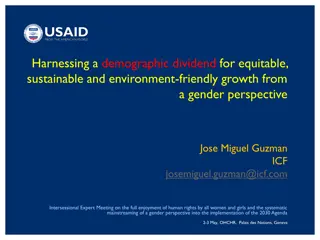
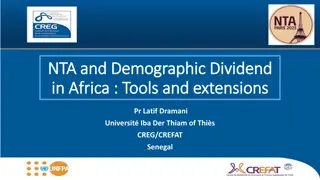


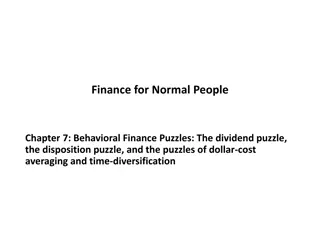

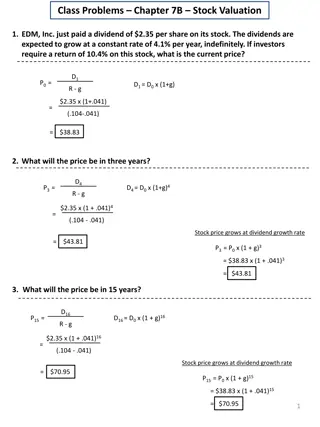




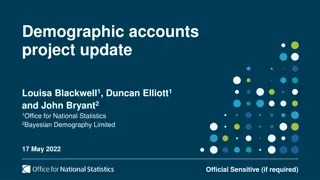


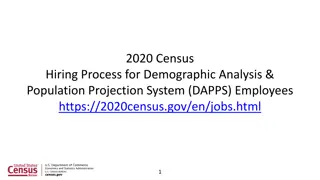











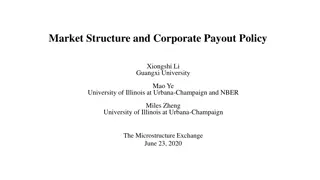



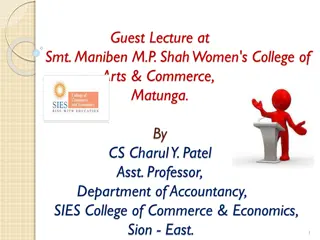

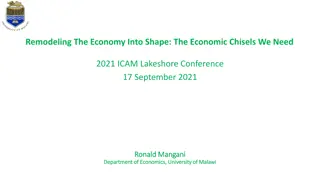



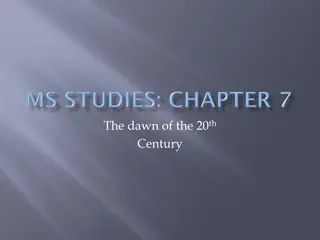
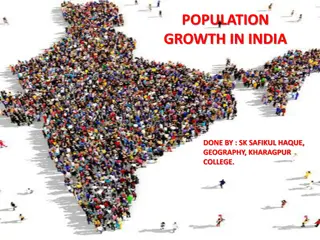

![Public Health Challenges and Responsibilities in [Name of Country]](/thumb/142726/public-health-challenges-and-responsibilities-in-name-of-country.jpg)







